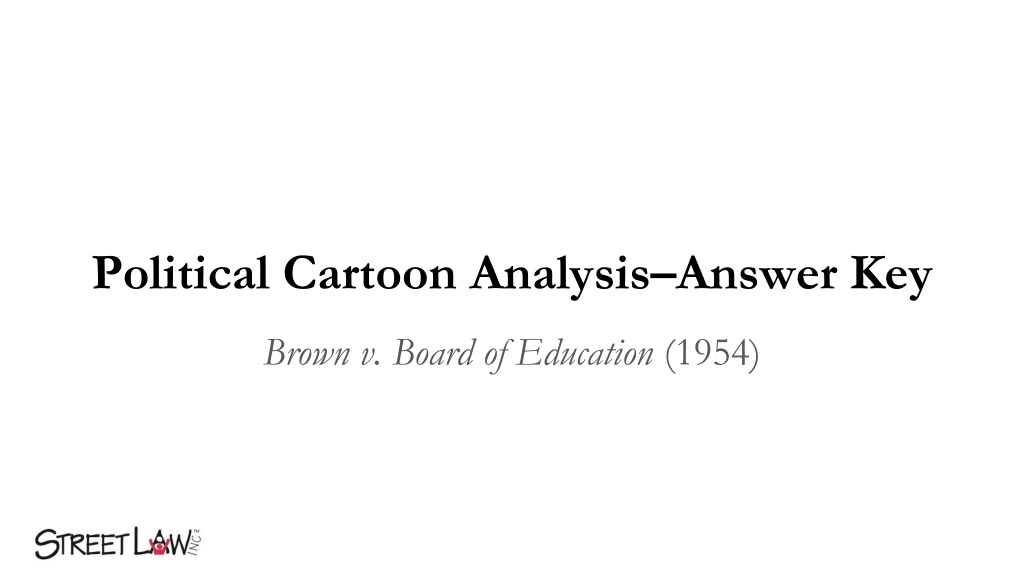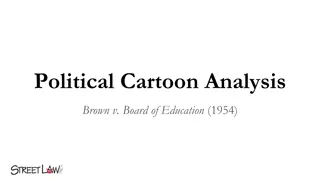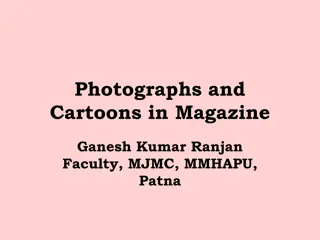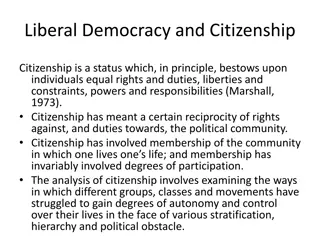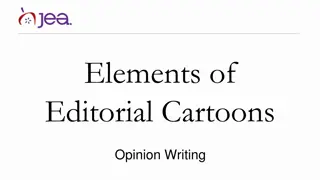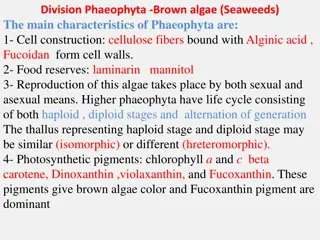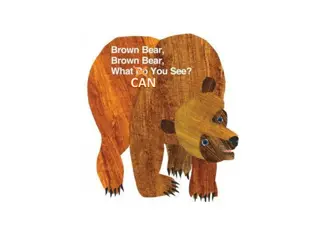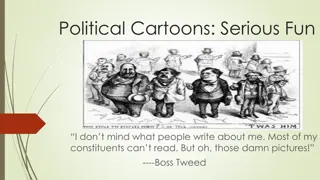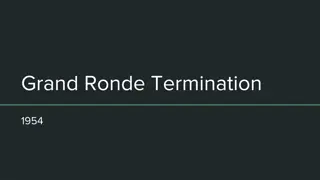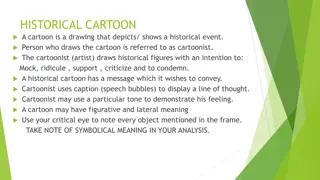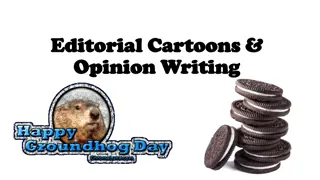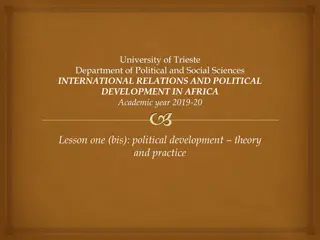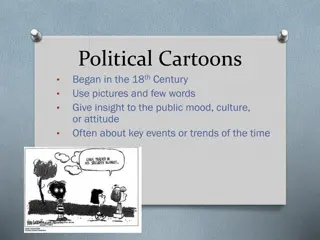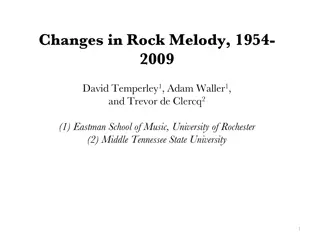Analysis of Political Cartoons on Brown v. Board of Education (1954)
The analysis examines two political cartoons related to the Brown v. Board of Education case in 1954. The first cartoon symbolizes victory against segregation, portraying the Supreme Court's support for desegregation. In contrast, the second cartoon criticizes the forced progress of desegregation, advocating for a gradual approach in race relations. The messages in the cartoons reflect different perspectives on the issue of segregation and the role of the Supreme Court.
Download Presentation

Please find below an Image/Link to download the presentation.
The content on the website is provided AS IS for your information and personal use only. It may not be sold, licensed, or shared on other websites without obtaining consent from the author. Download presentation by click this link. If you encounter any issues during the download, it is possible that the publisher has removed the file from their server.
E N D
Presentation Transcript
Political Cartoon AnalysisAnswer Key Brown v. Board of Education (1954)
For each of the following political cartoons, answer... 1. What do you see in the cartoon? Make a list of the people, objects, etc. 2. Which of the items on the list from Question 1 are symbols? What does each stand for? 3. What is the artist s message in the cartoon? Is there political bias? 4. Who would agree with the message? Who would disagree?
Cartoon #1 1. What do you see in the cartoon? Make a list of the people, objects, etc. The Lincoln Memorial, laurel wreath with tag saying "Anti-segregation", arm of the Supreme Court laying wreath 2. Which of the items on the list from Question 1 are symbols? What does each stand for? The Lincoln Memorial stands for President Lincoln's struggle against slavery, and the laurel wreath-typically given to victors-so the fact that it has an anti-segregation tag indicates that victory has been given to those who oppose segregation Source: Chronicle (San Francisco), May 18, 1954. Reproduced with permission.
Cartoon #1 3. What is the artist s message in the cartoon? Is there political bias? The message of the cartoon is that the Supreme Court of the United States has awarded victory to those who oppose segregation, possibly finishing the job that President Lincoln started. The cartoon clearly supports desegregation and the Court with its positive imagery. 4. Who would agree with the message? Who would disagree? Those who support desegregation and the Court s decision would agree with the message. Those who oppose desegregation would disagree with the message of this cartoon. Source: Chronicle (San Francisco), May 18, 1954. Reproduced with permission.
Cartoon #2 1. What do you see in the cartoon? Make a list of the people, objects, etc. A farmer, plow horse with a "gradualism" tag, field being plowed, words in field state "steady progress in race relations", racehorse with blanket reading forced progress being led by a judge or justice. 2. Which of the items on the list from Question 1 are symbols? What does each stand for? The Farmer represents the South. He is plowing a field with a plow horse, making steady progress in race relations. The judge or justice is coming with a racehorse, "forced progress", which represents the Brown decision. Source: Democrat (Arkansas), May 22, 1954. Reproduced with permission.
Cartoon #2 3. What is the artist s message in the cartoon? Is there political bias? The message of the cartoon is that progress in race relations should be a gradual process, not one that is forced. One should not use a racehorse to plow a field. A racehorse would likely tear up a field, just as a forced decision on desegregation would likely tear up the South. This cartoon is opposed to the Brown decision and forced desegregation. 4. Who would agree with the message? Who would disagree? Those who opposed to the Brown decision and forced desegregation would agree with this message. Those who support desegregation would be opposed to the viewpoint in this cartoon. Source: Democrat (Arkansas), May 22, 1954. Reproduced with permission.
Cartoon #3 1. What do you see in the cartoon? Make a list of the people, objects, etc. Two Black hands in chains, chains say segregated schools, two White hands breaking the chain with a hammer that states "Supreme Court decision." Which of the items on the list from Question 1 are symbols? What does each stand for? The Black hands represent Black children in the South, the chains represent the force of segregation which holds them back, the hammer represents the Supreme Court's decision in Brown. 2. Source: Defender (Chicago), June 12, 1954. Reproduced with permission.
Cartoon #3 3. What is the artist s message in the cartoon? Is there political bias? The message of the cartoon is that the Supreme Court's Brown decision breaks the chain of segregation, which has impeded Black children in the South. The decision has provided a new freedom, unrestricted by segregation. The cartoon clearly supports the decision. The imagery used links segregation with slavery (the chains). 4. Who would agree with the message? Who would disagree? Those who supported desegregation would agree with the message in the cartoon. Those who were opposed to desegregation would not agree with the message in the cartoon. Source: Defender (Chicago), June 12, 1954. Reproduced with permission.
Cartoon #4 1. What do you see in the cartoon? Make a list of the people, objects, etc. Earth, an exploded bomb, the words Decision on Segregated Schools , and the caption below A Supreme Court Bomb. 2. Which of the items on the list from Question 1 are symbols? What does each stand for? The bomb represents the Brown decision and its explosive impact. Source: Afro-American (Richmond), May 22, 1954. Reproduced with permission.
Cartoon #4 3. What is the artist s message in the cartoon? Is there political bias? The message of the cartoon is that the Supreme Court's decision in Brown will have an explosive impact. Given the destructive nature of a bomb, one might interpret this cartoon as being against the decision; however, looking at the source, that interpretation is likely false. 4. Who would agree with the message? Who would disagree? Those who agree with the correct interpretation of the cartoon would likely support the decision in Brown v. Board of Education. Those who disagree with the correct interpretation of the cartoon would likely oppose the decision in Brown v. Board of Education. Source: Afro-American (Richmond), May 22, 1954. Reproduced with permission.
